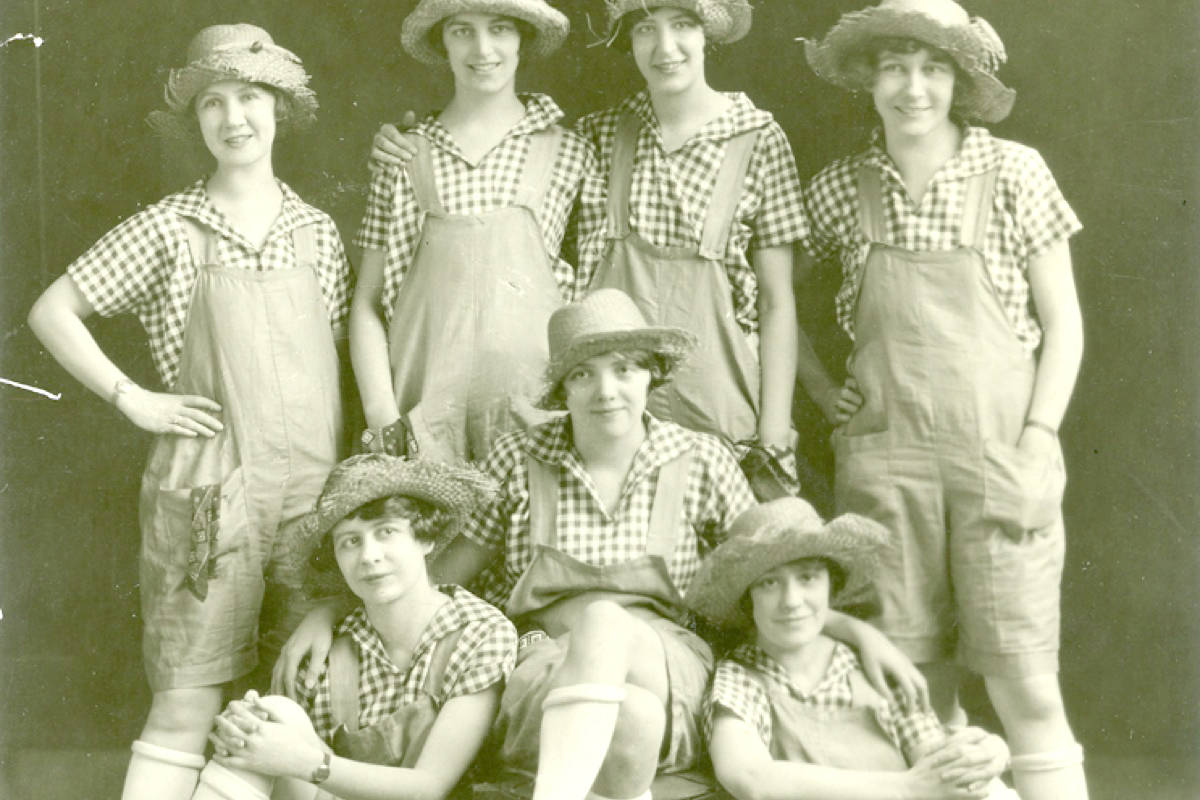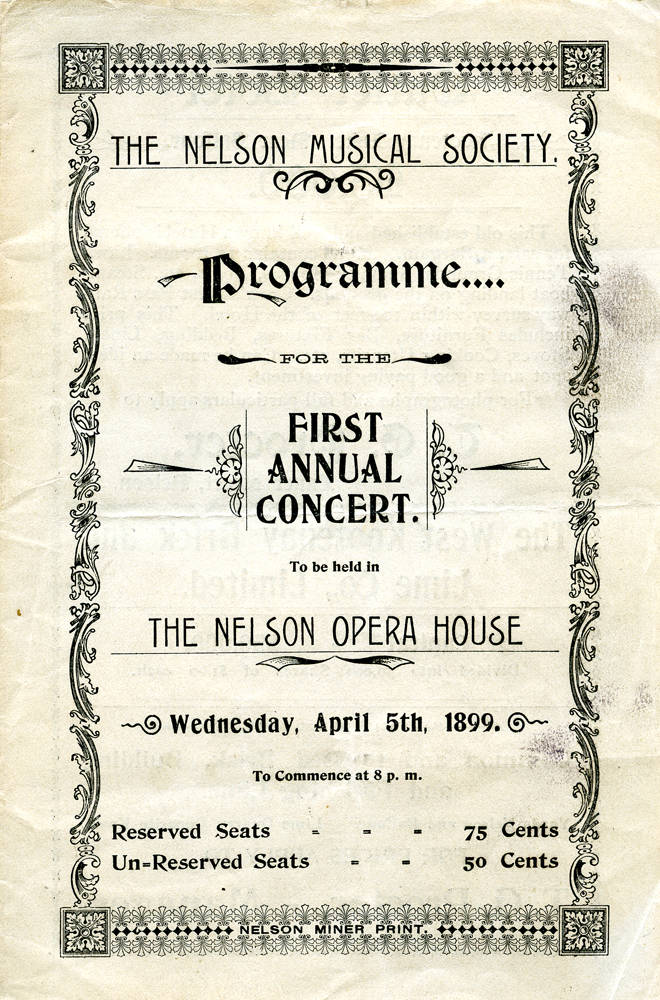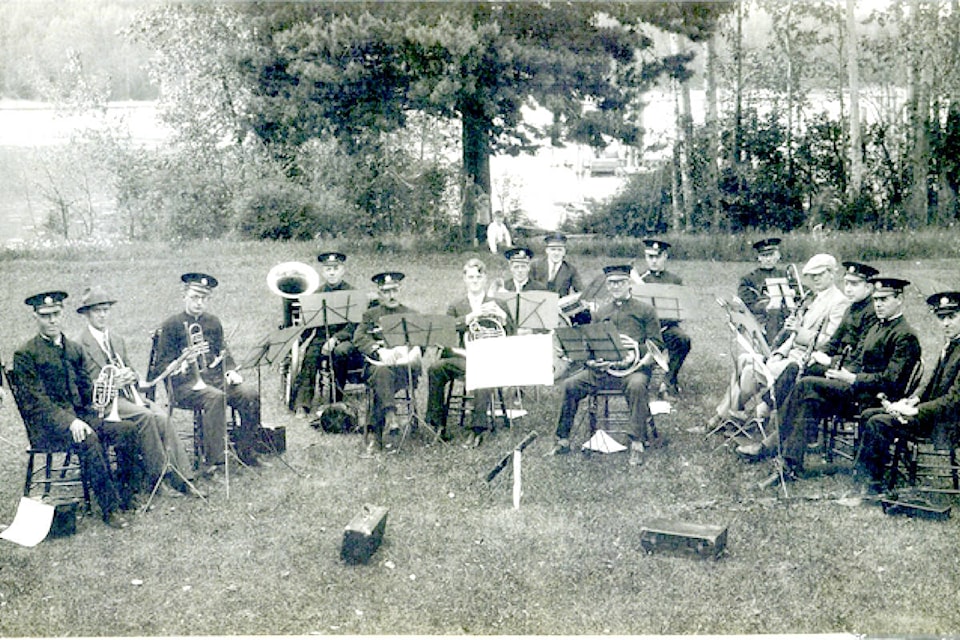By Anne DeGrace
It has been said that art is the measure of civilization.
If that is true, then the rough-and-tumble mining town that Gold Commissioner Gilbert Malcolm Sproat hoped might become “the town of all towns for civilized habitation” was well on its way when it was incorporated in 1897. That was the year a traveling piano tuner told the Weekly Miner that: “there are more pianos in the homes of Nelson than there are in the homes, saloons, and concert halls in all the other towns in the district combined.”
Of course, civilization as envisioned by Sproat was viewed through an immigrant’s lens. While Nelson was incorporated 30 years after Canada’s confederation, artistic enterprise had been going on in the area since long before that historic day. Indigenous residents had, for centuries, been incorporating art into everyday living through the artistry inherent in clothing, basketry, carving, canoe-building, pictography, and functional design.
The newcomers brought their own traditions along with their pianos. Domestic enterprise such as needlework and other fibre arts came from Eastern Canada and Europe; Doukhobor settlers brought artistic traditions from their Russian roots: weaving, carving, and music, among others.
Long winters lent themselves to literary pursuits and painting; the growing community developed an appetite for the performing arts, leaving their hearths to enjoy home-grown spectacle and the company of others. Travelling Chautauqua festivals found enthusiastic audiences when they’d pitch their tents on civic grounds. The Nelson City Band struck its first notes in 1893.
By the 1890s artistic sensibility was evident in the new buildings on Baker Street: flourishes on the Bank of Montreal building and the castle-like courthouse designed by Francis Rattenbury, and the entrance to the Burns block, incorporating a steer’s head as a nod to owner and beef baron Pat Burns. Alexander Carrie designed the Nelson Opera House and landmark KWC block. These and other buildings set the stage for Sproat’s envisioned “town of all towns.”
The Capitol Theatre opened in 1927 to show silent films and the new “talkies,” wooing audiences with its red plush seats, ethereal murals, and a ceiling of drifting clouds. When, in 1936, the Civic Theatre opened with a brand new screen, the Capitol languished for decades until a mammoth community effort resurrected it. The Capitol reopened in 1988 and remains the town darling when it comes to live performance, while the Civic began showing films again as a locally-run independent theatre thanks to another community effort a few years ago.
Nelson has enjoyed its share of famous names, from a young Boris Karloff appearing at the Nelson Opera House (a cultural cornerstone until a spectacular fire in 1935) to prolific novelist Frederick Niven to world-renowned soprano Nancy Argenta. The list is long. Many people who got their start in, say, Mary Annable’s music lessons or Nelson Little Theatre productions made creative pursuit a lifelong passion.
Gladys Attree’s school of dance had young folks tapping in the 20s and 30s; it was there that future mayor Tom Shorthouse and his sister, author Sylvia Crooks, learned the routines that had them dancing between features at the Civic Theatre. Amy Ferguson founded the Nelson Boy’s Choir in 1930, teaching hundreds of young people over the next 40 years; her legacy lives on in the Amy Ferguson Institute, which has offered master classes, festivals, and original opera productions.
Arts education has nearly always been present, whether entrepreneurial or institutional. The Nelson School of Fine Arts opened its doors in 1958. From this emerged the Kootenay School of Art, which had 10 full time students when it opened in 1960; eventually it was taken under the wing of Selkirk College.
David Thompson University Centre opened in 1979 to offer multidisciplinary, integrated liberal and fine art school. Student productions were memorable, right up to the final performance piece in 1984: a funeral procession on Baker Street to protest the school’s closure by the government of the day.
The Nelson and District Arts Council held the dream for several years, hosting the Kootenay Lake Summer School of the Arts until the new, independent Kootenay School of the Arts (KSA) took up the torch in 1991. The ebb and flow of financial support was a struggle; in 2004 Selkirk College absorbed the school, which became studio-focused in metal, textile, clay, and small object design, complementing existing programs in digital arts and music.
None of this was without bumps and bruises. With no writing and drawing programs present in KSA’s new iteration, former instructors created the Nelson Fine Art Centre Society. Eventually renaming itself Oxygen Art Centre, today the artist-run society offers instruction in writing, visual arts, and performance.
Creative re-imagining continued when the Nelson Museum became Touchstones Nelson: Museum of Art and History and moved to the turreted building that had previously been a post office, museum, and most recently City Hall. When the City of Nelson relocated its administration, the move made way for history to be both honoured and appreciated. In addition to the permanent historic exhibit there are two public galleries. The museum archives are named for Shawn Lamb, a long-time museum director and a founding member of the Nelson and District Arts Council.
In the 1980s, American author John Villani named Nelson as one of the 100 best small art towns in North America (top of the list for Canada). Nelson’s cultural community embraced the accolade, and civic leaders took notice. A study of the economic impact of arts was subsequently undertaken, which spawned a working group and a task force, which resulted in the creation of what is now the Cultural Development Committee (CDC). Among the many initiatives of the CDC was the creation of an annual Cultural Ambassador, a successful artist or artistic group representing one of several disciplines to shine a light on Nelson’s artistic “civilization.”
A walk through Nelson today offers plenty of evidence. There’s the Craft Connection, in operation more than 30 years and one of the oldest craft collectives around. Figurative stone sculptures created by artist John McKinnon in the 1980s have since been joined by others, including annually-installed touring sculptures. Businesses and restaurants show art all year ’round, influenced in part by Nelson’s Artwalk, which began 29 years ago and brings hundreds out each summer for multi-venue exhinitions.
At the Capitol Theatre on any given night there might be a home-grown dance production or a touring ensemble; at the Shambhala Music Hall, a four-piece jazz band. Touchstones might be showcasing a multi-media exhibition while at the Moving Centre, young dancers hone their skills and in a church hall the Corazón choir practices for their next tour.
Sometimes, it’s hard to choose which event to attend: the Civic Theatre could be showcasing a youth film festival while at a nearby coffee shop there’s a slam poetry night. At the Elephant Mountain Literary Festival, local and visiting authors take the stage; at Blue Night, every artistic discipline comes out to strut its stuff.
Perhaps, had Sproat envisioned a town of all towns for colourful habitation, he’d have been closer to the truth. If the past and present are any indication, the future of the arts in Nelson looks rosy.
Compiled with materials sourced from the archives of the Nelson Public Library and Touchstones Nelson.


